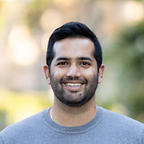Strive to have more than one PM superpower
Last month, I spoke a bit about how it’s worth it to do what it takes to grow your product — whether that means picking up a new skill or other functional roles when it’s needed at different stages of the company.
We often underestimate the value of recognizing when these “sprints” are needed to be taken by members of a product development team, and how impactful that can be in the future of both the company and your own career.
As I’ve gone about my product career, the meaning of what I deemed to be a successful PM has evolved over time. I ended up settling on a few traits mentioned in a past article — but I’d like to focus on one specifically throughout this series.
The coveted “superpower” that we are told every PM should have.
Why should it only be one?
Designing software product at Brilliant
Over the last 15 months, I’ve been at Brilliant, I’ve definitely grown to have the opinion that it is better if it’s not just one.
Traditionally, my “superpower” had been working with Product Analytics and being able to use data to make product decisions. I started off as a Product Management Analyst at Trulia after a background in Strategy Consulting, so I leaned heavily on quantitative data to make product decisions. I excelled naturally in the analytical sides of product management and spent time learning from my cross-functional peers on aspects of UX, Engineering, and Marketing. But being at a larger company meant that you don’t get a full taste of what the function can involve. Roles are specialized and lanes are not traditionally crossed.
At a startup, you learn fast that when there’s a deadline — like getting the product ready for launch — if you feel that you can make a difference, you pick up what’s remaining. And that decision may actually influence how smoothly things go.
We launched our Smart Home Control in September of 2018. I joined in March, and in the months leading up to it, I focused primarily on the software components to work with engineering to get it ready. When we got closer to the software lock date for what would be flashed on the hardware, I found myself in a dilemma. There was simply too much design work for our product designer (who was also remote) to complete it all within the deadlines needed. I found myself realizing the only path forward was to split up design work between the two of us.
Initially, it started off with smaller iterations or quick fixes to help get engineering the assets they needed. The product designer was invaluable in these times to help get me up to speed on design tools like Sketch, Abstract for design collaboration, and Zeplin for design asset management.
What was interesting about this time was that I didn’t realize how valuable it would be in the future. I thought I was just doing a task that the company needed. After all, that’s what a startup is all about right?
Wrong. I was learning a core skill that I think I will use for the rest of my life. While in the past I had delegated this task to designers, over the last year when I spec out features, I also design them and write out the event logging and analytics requirements (a topic for my next segment). The quality of my specs have completely changed, and actually, reduce the amount of iteration needed on each product feature during the requirements stage.
At Trulia, ZillowGroup, and Shopkick, working on a consumer product meant I naturally wireframed on whiteboards and made low-fidelity mocks while interfacing with designers. I always paid attention to the design systems that were used, the user research methods, and the various UX flows that we iterated through together. I have those moments to thank as the foundation for how I learned and picked up design work within a matter of a few months.
Discover a lifelong passion
This experience has made me a much more versatile product manager and honestly opened an avenue into a space that I did not realize I had such an interest and ability. I find myself gravitating to UX problems, reading about design, and paying attention to aspects of the product I did not notice before.
If there is anything to learn from my experience, it is that getting your product to the finish line may sometimes bring other surprises besides just the metrics and success from that product.
You may actually discover a lifelong passion.
For me, that will be driving to the simplest user experience possible in any product I work on.
Originally published at productsthatcount.com on June 12, 2019.
